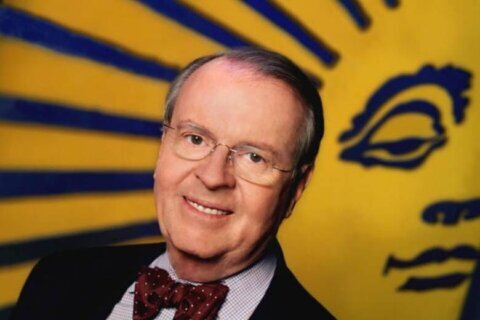In Disney’s hit show “The Mandalorian,” the title character has defeated a dragon, massive ice spiders and a horde of ugly squid-face creatures called Quarren.
But in a recent episode, the stoic bounty hunter faced perhaps his most fearsome foe: pluralism.
For the uninitiated, “The Mandalorian” is a live-action series that explores an outer rim of the ever-expanding “Star Wars” galaxy. In Season Two, airing now on Disney+, the main character — named Din Djarin — is looking for other Mandalorians, a diaspora in exile from their home planet.
Raised by a religious cult, Djarin suddenly discovers other Mandalorians who — gasp! — follow different creeds, or perhaps no creed at all. He greets this new fact with the enthusiasm of a man handed a ham sandwich at a bris.
Judging by Google, many people are curious about the mysterious “Way of the Mandalore,” the creed shared by Djarin and his sect. The question, “What is the Mandalorian religion?” has consistently trended since the show premiered last year.
A Mandalorian credo, “weapons are part of my religion,” also is trending now. (Is that bad? That seems bad.)
The answers to this question, so far, have been sparse. But a recent episode contained a major revelation.
‘Star Wars’ has featured religious themes since the beginning
This is not the first time “Star Wars” has dabbled in religion. George Lucas, the franchise’s creator, has said he wanted to introduce young Americans to spiritual teachings though “new myths.” “I wanted to make it so that young people would begin to ask questions about the mystery,” he said.
In the ’70s and ’80s, the interstellar saga explored Eastern traditions, mainly Buddhism and Taoism, just as many “spiritual, but not religious” dabblers were doing the same. At the turn of the millennium, “Star Wars” caught the McMindfulness craze — 1999’s “The Phantom Menace” opens with two Jedi talking about the benefits of meditation.
And now, with “The Mandalorian,” we see the “Star Wars” universe borrowing from another contemporary feature of religion: the battle between orthodox conservatives and liberals.
Until recently, the show kept most explicit details about the Mandalorian religion under wraps. We know that Mandalorians consider themselves both hunters and prey, never remove their helmets in front of other people and vow to always protect each other in a blaster fight. And the weapons thing.
(There’s more about Mandalorians in other “Star Wars” series.)
Since being rescued as a war orphan, Djarin has been schooled in “the Way,” which he believes is singular and shared by all. But, in a recent episode called “The Heiress,” he is shocked to meet other Mandalorians who casually remove their helmets, breaking a big taboo.
These new Mandalorians mock Djarin’s conservative practices and tell him that he’s actually part of a small sect of religious zealots called “The Death Watch.”
In other words, there is not just one Way; there are Ways.
Watching Djarin’s shock and confusion at this unwelcome news was like seeing a sheltered fundamentalist freshman in his first theology class at a liberal arts university. Mind. Blown.
The moment may mark a turning point for Djarin. One writer compared it to an Amish youth “finally on his intergalactic Rumspringa.” Another said it should prompt a “huge spiritual crisis.”
‘The Mandalorian’ echoes the story of American religion
It’s not hard to see some parallels with our own world. A lost young man finds an identity, community and mission in a violent, counter-cultural sect. He knows nothing of his faith’s diversity and scorns those who differ.
Then pluralism — a fancy word for our ability to live together amid differences — smacks him across his shiny helmet.
In the “Mandalorian,” Djarin weakly insists: “There is only one Way. The Way of the Mandalore,” then turns on his rocket backpack and flies away.
Discussion over.
But not for long, we expect.
We’re not so great at pluralism ourselves.
In some ways, the clash of religious views in “The Mandalorian” echoes the story of American religion over the past few decades. As believers argue over LGBTQ rights, religious freedom and Scriptural interpretations, pews have become more polarized, common ground harder to find.
Some experts see the cresting tides of xenophobia and tribalism and predict a poor future for peaceful coexistence.
They have a point.
In the United States, for example, new FBI data shows that hate crimes surged in 2019 to the highest level in more than a decade. Most of those incidents were motivated by racial or ethnic bias and another 20% by religious bias, according to the FBI.
Because this is Hollywood, it seems inevitable that the Mandalorian will eventually go the way of the creedless Unitarianians, steadily shedding his beliefs one by one.
It would be nice if that didn’t happen. It’s much more interesting to watch someone struggle with their beliefs, rather than surrender them. What if Djarin stayed true to his Way and the others to theirs, without either side trying to convert or coerce the other.
We could use more models of how different people can coexist without common creeds, even if they come from a galaxy far, far away.







